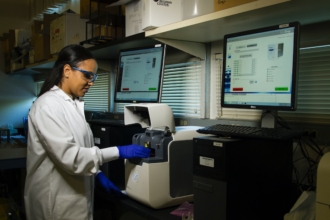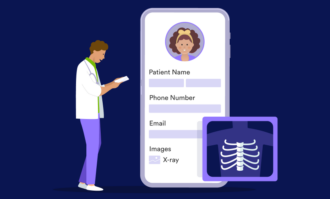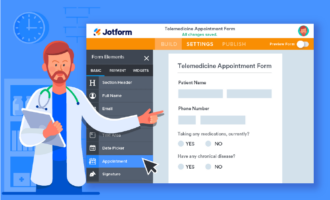Healthcare organizations of all sizes are turning to telehealth to deliver care to their patients. In a March 2020 survey, 41 percent of healthcare providers surveyed responded that they were currently using telemedicine technology, up from 22 percent in 2018. This includes live video conferencing as well as remote patient monitoring.
While screening for the coronavirus is one of the more popular applications for telemedicine, there are several different types of telehealth. It isn’t limited to triage. The widespread availability of video conferencing because of smartphones, broadband internet, and Bluetooth-connected monitoring devices means that telehealth can apply to other types of healthcare.
Here are seven types of telehealth
Telenursing
Telenursing has been around for years. Before video conferencing, a registered nurse (RN) would answer questions and conduct triage over the phone. For example, if you called the RN at your doctor’s office to ask about a cough, they would ask you what other symptoms you had and determine whether you needed to come in for an exam.
Today, telenursing means a lot of different things. It can include a video call so that the RN can give you instructions. For example, if you have to change a dressing on a wound, the RN could show you how to do that.
Telenursing can also be done with remote patient monitoring. For instance, a patient could use an at-home glucose monitor with a Bluetooth connection, and the RN could monitor the data uploaded from that device to determine how the patient is doing with their current course of treatment for diabetes.
Telepsychiatry
While it can encompass almost all mental health care delivered remotely, telepsychiatry primarily is a visit with a psychiatrist or psychiatric nurse practitioner conducted through a video conference or telephone call. During a telepsychiatry visit, the provider can evaluate the patient’s response to medications, provide counseling, and prescribe medication.
However, there are some restrictions on telepsychiatry. For example, the Ryan Haight Online Consumer Protection Act of 2008 specifically requires that providers conduct an in-person visit before prescribing a controlled substance to a patient.
Teletherapy
As a subset of telepsychiatry, teletherapy is when a counselor, licensed social worker, psychologist, or other professional provides therapy via video conference. Teletherapy can be used for mental health treatment as well as speech and occupational therapy. Anything that could be done face-to-face, like verbal exercises to mitigate a stutter, can be done through teletherapy.
This is particularly helpful for speech and language therapists. Currently, there is an increased demand for them, with employment projected to grow 27 percent from 2018 to 2028. Teletherapy allows speech and language therapists to conduct sessions with clients outside their geographic areas, as well as with homebound clients.
Teleradiology
The U.S. Bureau of Labor Statistics (BLS) noted a faster-than-average increase in the need for radiologists, with an expected 9 percent growth from 2018 to 2028. This demand for radiologists means that patient images like MRIs, X-rays, and CT scans aren’t being read as fast as the doctor ordering the test would like.
With teleradiology, the images are electronically transmitted to the radiologist for review. The radiologist then sends their interpretation of the results to the ordering physician. For example, a patient’s MRI images are uploaded to a secure EHR platform. A radiologist reads the images and makes notes in the EHR software, then discusses the results with the patient’s primary doctor.
Teledermatology
There are two primary uses for teledermatology — for a general practitioner to get a second opinion and discuss treatment options with a dermatologist, and for a dermatologist to remotely treat a patient with a chronic condition. Teledermatology can also be used to triage conditions and refer a patient for an office visit if needed.
An example of remote care for a patient would be a follow-up visit for a skin condition. Some conditions require multiple appointments per week. However, a virtual visit can save the patient time and help a dermatologist determine whether the treatment plan is effective.
Telepathology
Thanks to the availability of high-quality imaging, pathologists can now diagnose diseases remotely, using telepathology. As with teleradiology, a pathologist receives and analyzes images electronically, then provides a diagnosis. This can be done with a virtual slide system, a real-time system like a robotic microscope, or a static image taken from a slide.
For instance, a pathologist can remotely view a tissue sample that’s been inserted into a robotic microscope. They can change how much the sample is magnified and focus the microscope. By using a video conferencing tool at the same time, they can discuss their findings with the ordering physician.
Telerehabilitation
When patients are released from the hospital after an accident or illness, they may still need rehabilitation like physical therapy, occupational therapy, or other services. With telerehabilitation, these services can be delivered through video conferencing. Telerehabilitation is also used to evaluate how well a patient can function in their environment.
One example of telerehabilitation is for patients who need physical therapy. They can be sent home with a motion-sensing device to detect their posture and how they are moving. During video sessions, and with data from the device, the physical therapist can design custom plans for the patients.
While many doctors prefer to see patients in person, and many patients may want to see a medical professional face to face, these types of telehealth services can make it easier to get care. For patients who would otherwise have to travel a long way for services, telehealth can make a huge difference in the quality of their care — and their lives.

















































Send Comment: